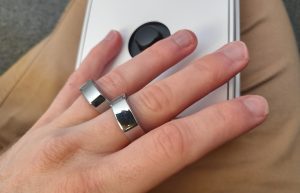I purchased my Oura Generation 2 ring in April 2021 and upgraded to the Generation 3 ring last week. As expected, it wanted to transfer my data to the new ring and restore the Gen 2 to factory default. Instead, I registered it on a second phone, allowing me to simultaneously track my statistics with both rings.
I’ve been typing up 16 values from both rings in a spreadsheet each day. This allows me to load the data into a Jupyter notebook and compare the two. Let’s begin with Activity.
Activity
Now the Oura ring doesn’t claim to be the leading wearable for fitness tracking, so expectations are low. That being said, calorie burn is often within 10% of each other. The next software update will introduce heart rate tracking during workouts, which might make future comparisons more insightful. Note: the bar charts are comparing the difference, while the line graph compares absolute values.
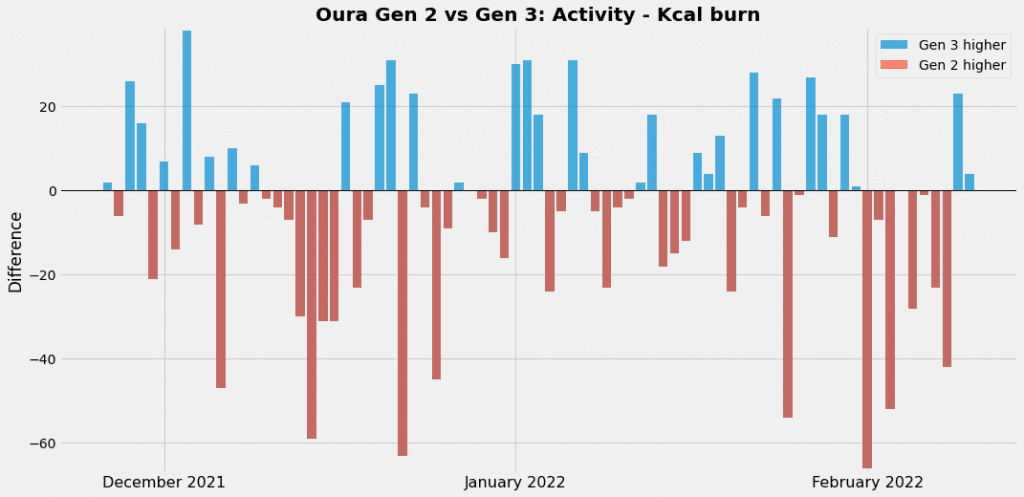
Inactivity is defined as sitting, standing or otherwise being inactive in the last 24 hours, excluding resting and sleep. I do have periods at my desk where I’m only monitoring something on screen, and both rings can classify this as rest. It’s within 10%, but the potential for them to differ by over an hour feels like a lot.
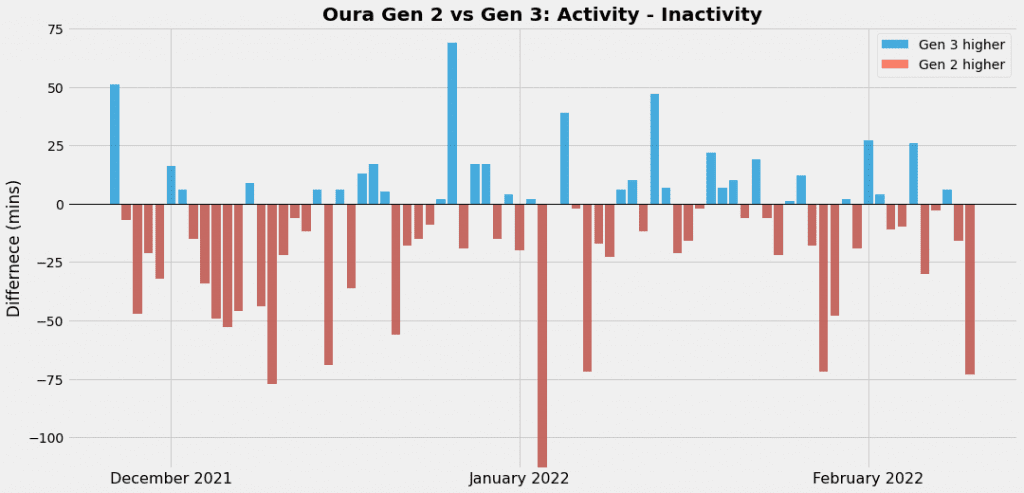
Sleep
Okay, on to arguably the most important metrics reported by the Oura ring.
I’ve always felt the Oura Gen 2 ring was excellent at determining my initial sleep time and eventual wake up time. The discrepancy here in total sleep time is therefore due to the interpretation of night waking. I have 14 month old twins, whose cots are either side of our double bed, so night waking is almost guaranteed. Here the newer Gen 3 ring reports on average 14 minutes longer total sleep than its predecessor. The sleep algorithm is constantly being updated so you would expect the Gen 3 to be the more accurate of the two, but I don’t believe this to be the case.

Deep sleep is thought of as the physically restorative, taking place mainly in the first half of the night. On average the new generation 3 ring reports a whopping 24 minutes more deep sleep. The average duration of my deep sleep with the Gen 2 and Gen 3 rings is 1hr 46 and 2hr 10 respectively.
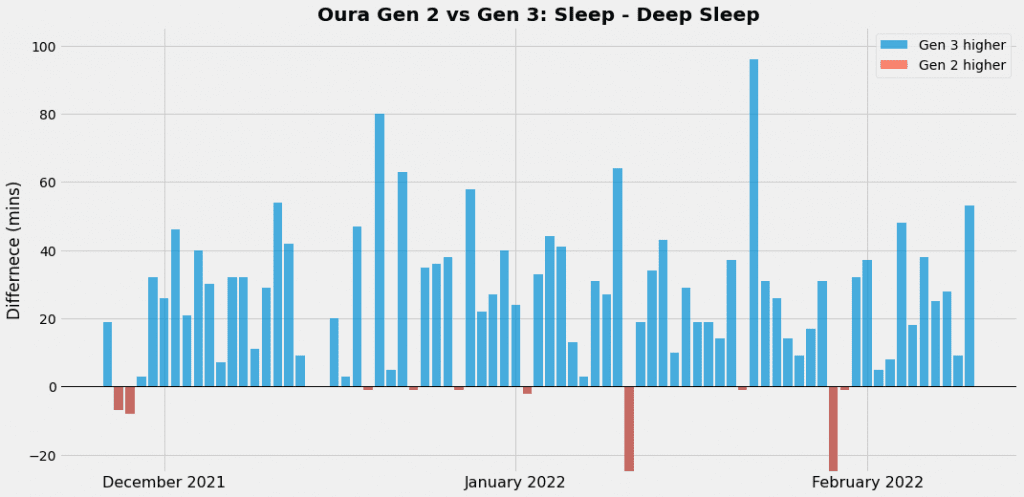
By contrast, REM sleep (rapid eye movement) is the mentally restorative sleep, generally in the second half of the night. In the first 70 days of wearing both rings the Gen 3 ring assigns an additional 7.5 minutes per night to REM sleep. While I haven’t recorded it here, the third category of sleep is Light sleep, and the three stages add up to total sleep time.

Sleep latency is the number of minutes it takes you to first fall asleep, having got into bed. This is one I would expect the rings to perhaps be close to each other, but overall one that I feel it underreports.
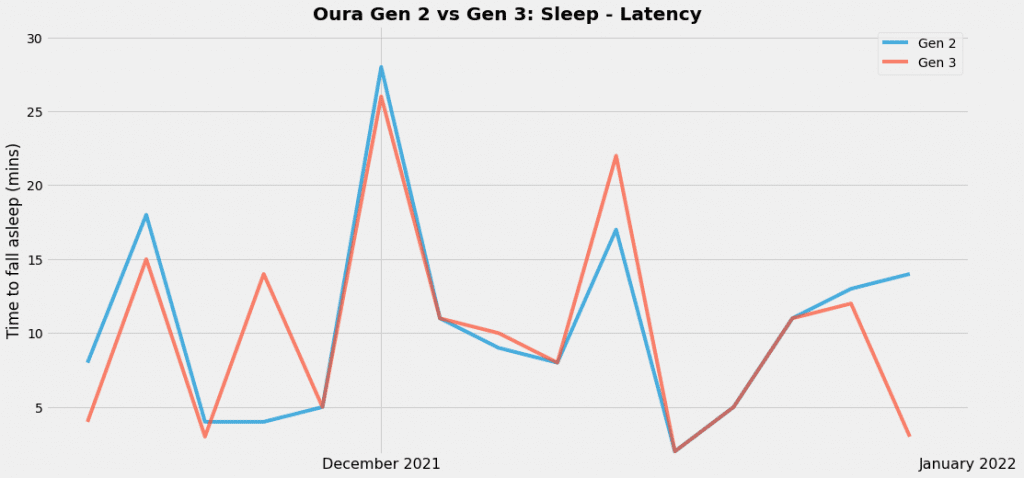
Scenario: I go to bed at 10.10pm, but after lying awake for a while I reach over to check the time on my phone. It says 10.35pm. I then roll over onto my other side, and drift off in 8 minutes. The true latency here should be from 10.10pm to 10.43pm, i.e. 33 minutes, but it will generally reset from my movements at 10.35pm, and report a latency of 8 minutes. That’s likely what happened on the 29th November, where the difference is 10 minutes, and otherwise the two are pretty similar.
- Sleep efficiency is the proportion of time in bed that it considers to be sleep time, which is within 1-4%.
- Restfulness measures tossing and turning, getting up to go to the loo etc.,
- Timing is based on an optimal window (in my case 9.30-10.30pm), and measures consistency of bed time.
These three, and the above four values, are the contributors to my overall sleep score.
Unsurprisingly, given the Gen 3 reports longer total sleep, deep sleep and REM sleep, my sleep score is better in the Gen 3. As the sleep score feeds through to the readiness score, this may have an impact on how much activity it will recommend for the coming day. 3rd January was the biggest difference in total sleep time, with the Gen 3 reporting an extra 80 minutes of sleep. That night involved waking at 5.30am but later lying motionless on the sofa around 8am, which the Gen 3 ring reported as additional sleep.
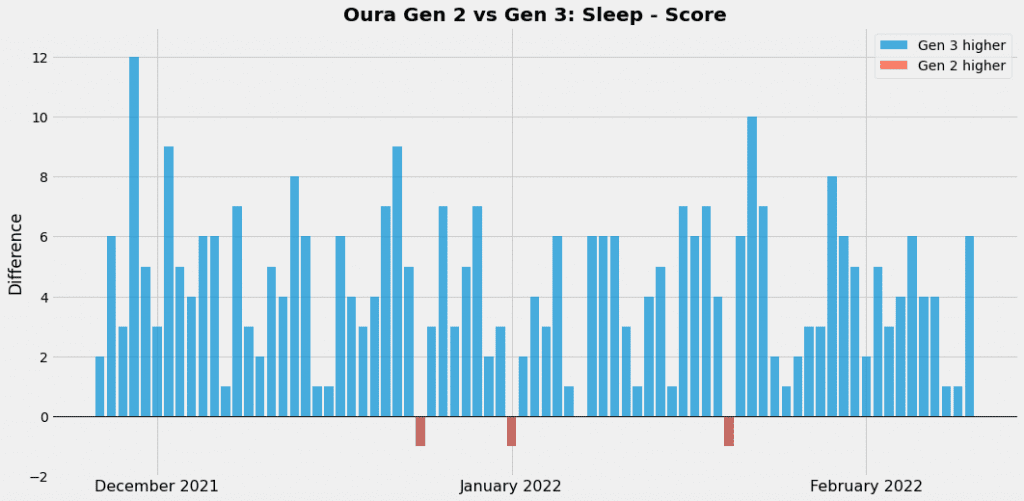
Readiness
Values from activity and sleep both contribute to the readiness score, alongside other factors like heart rate and HRV balance.
For both Lowest Heart Rate and Average Heart Rate, the two values matched almost perfectly, and at most differed by 1 bpm – pretty good! For this reason I stopped tracking those scores towards the end of December.
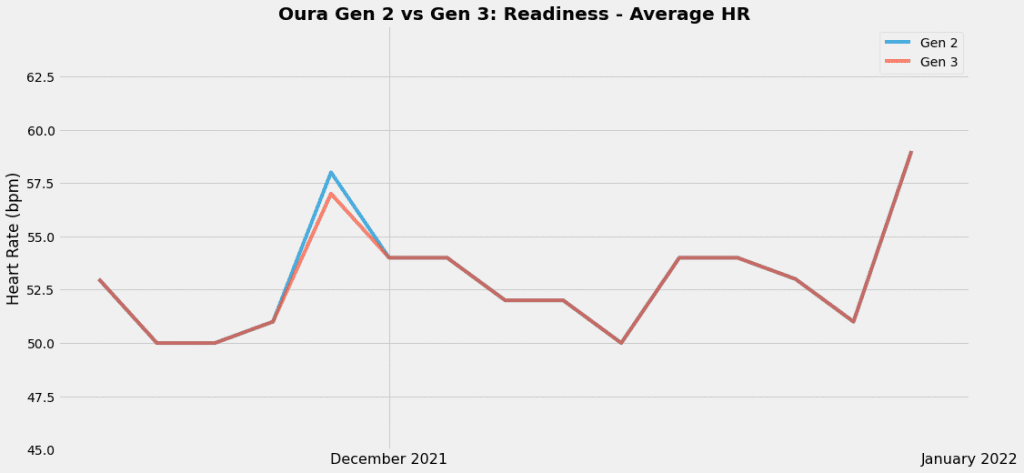
The next Readiness value that’s directly comparable is respiratory rate, which is generally within 0.2 (one breath different every 5 minutes). This is another one I wasn’t too interested in so tracking was stopped early.
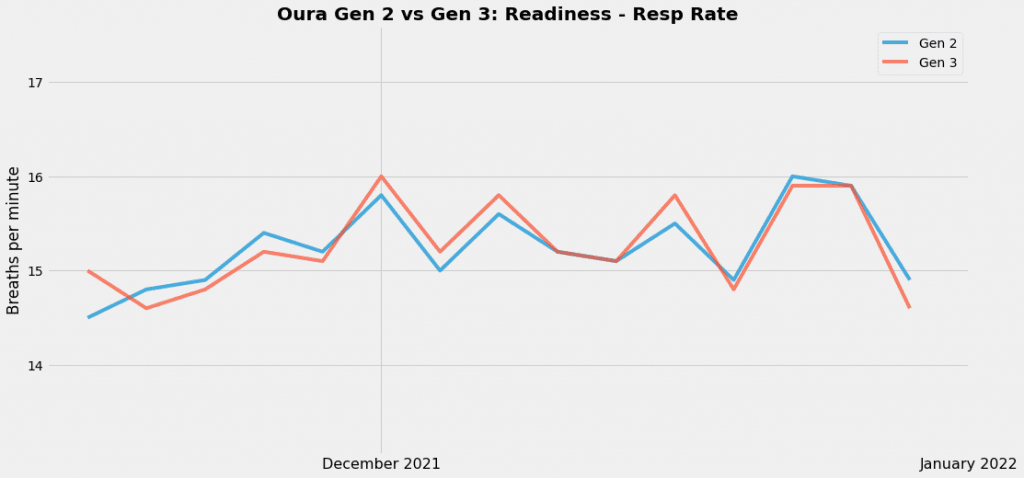
For Heart Rate Variability (HRV), the new Gen 3 gives on average a lower score. As you can see they tend to differ by up to 3ms, or around 5%. HRV is the variation in time between your heartbeats, and a higher variation is generally considered better.
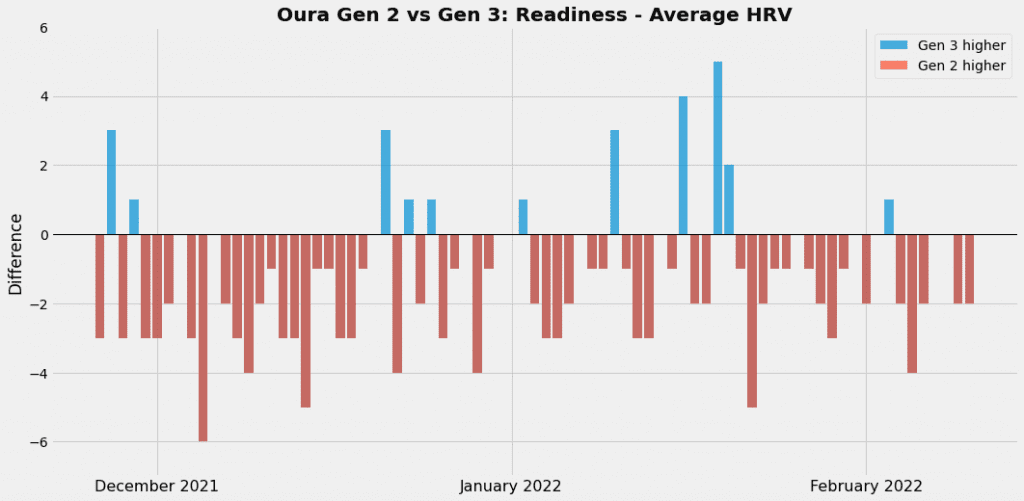
The Maximum HRV had some bigger differences, but I’ve always considered the graph to look quite noisy. For that reason I don’t read too much into my maximum values, and here they differ by up to 27ms.
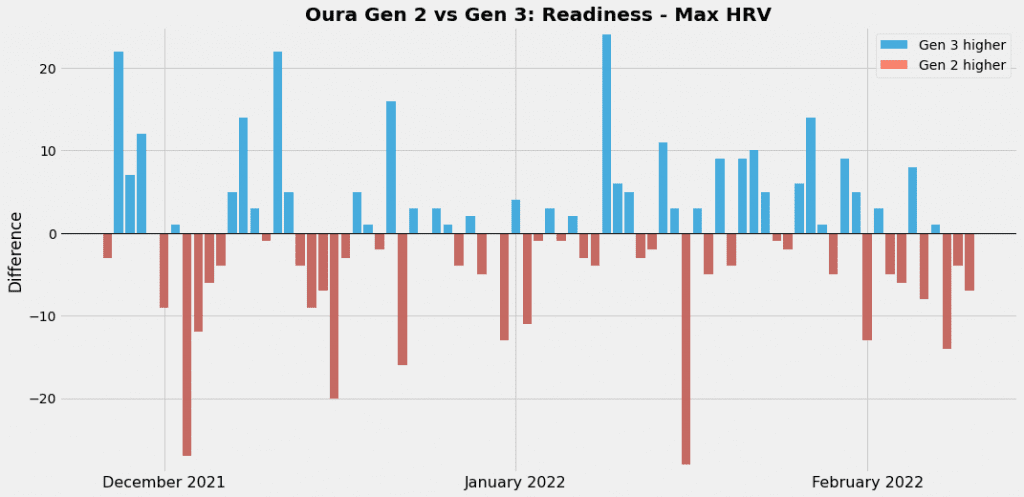
The overall readiness score considers the above values as well as some metrics from activity and sleep. The average variation between the rings is 2.3 but can often be above 5. That means my Gen 2 might be telling me to take it easy while the Gen 3 gives me the green light to train hard.

Overall I would question the assumption that the Oura Generation 3 ring is reporting sleep more accurately. From examining how each ring interprets the same night of sleep, I believe the Gen 3 is overreporting sleep. It’s too quick to assume I’ve fallen asleep again when I’ve woken in the night, simply because I’m lying motionless.

